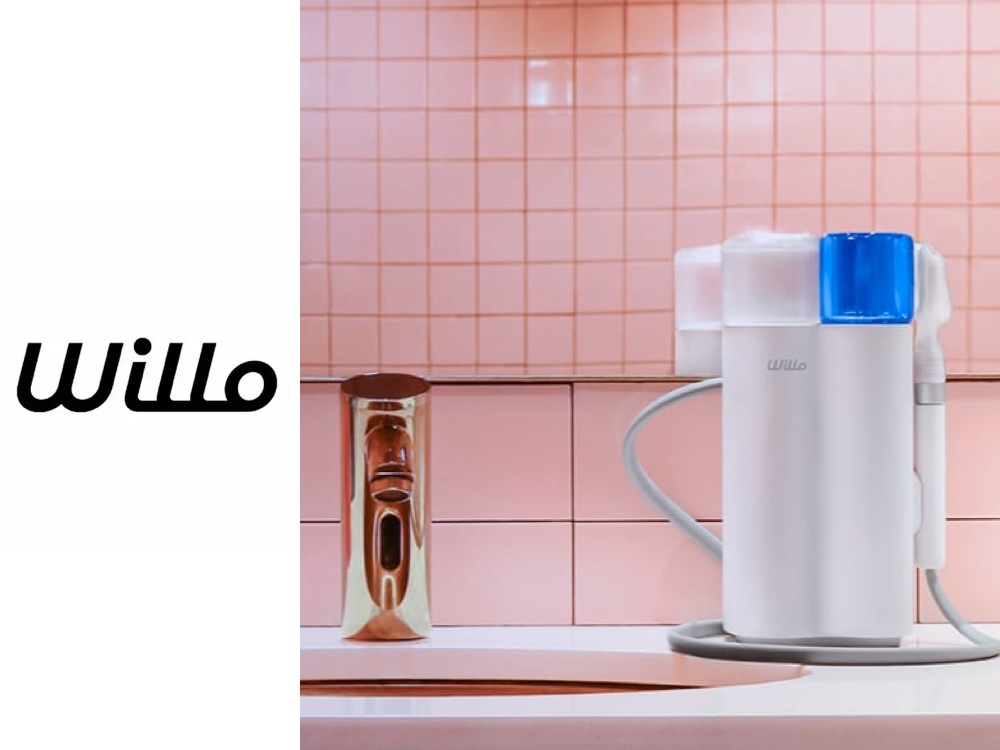
This article was featured in the March 2021 issue of Foundr Magazine
(click to view the piece)
The better you are at understanding what your customers want to accomplish in their lives, the better you’ll be at marketing. That understanding allows you to create the bridge between your customers’ needs and your brand’s communications.
When you’re clear on what motivates your customers and the outcomes they’re seeking, your brand’s key messages and content can speak to fundamental ideas like:
- Where your brand fits into your customers’ lives
- What benefits your brand provides to customers
- How your brand’s position is different in a way that’s meaningful to customers
- Why your brand will help your customers fulfill their larger emotional and aspirational needs
Notice that each item in that list centers around looking at your brand through the eyes of your customers. It’s not simply describing what you do. It’s how you’ll help your customers make progress in their lives in a meaningful way.
The goal then is to discover what’s driving your customers to seek out your brand.
And we want a broad view of their thinking.
To start, we look at the surface level triggers that initiate their search for a solution. But we also want to know what’s fueling those feelings behind the scenes. What big picture emotional and aspirational needs drive those behaviors?
When your marketing speaks to those deeper needs, it’s easier for customers to imagine life with your product or service. They don’t have to do a lot of mental heavy lifting to figure that out for themselves.
At Map & Fire, we use the Jobs to Be Done framework along with surveys and interviews to gather data and structure ideas on motivations and outcomes.
But before that we always like to start with a brain dump. As founders and marketers we have a lot of subject matter expertise about our customers through our own experience.
To tap into that we need to put on our empathy hats. We need to put ourselves in the shoes of our customers and think about life separate from our own brand and offerings.
An exercise we’ve developed to help with this process is the 5 And-Then-Whats.
But before we jump into that, here’s a quick background on the concept that inspired this idea — the 5 Whys.
The 5 Whys Methodology For Root Cause Analysis

There’s a popular problem-discovery technique used in the business world called the 5 Whys. It was created by the Japanese industrialist Sakichi Toyoda, whose son Kiichiro famously founded the car manufacturer, Toyota.
The purpose of the 5 Whys is to help discover the root cause of a problem. The idea is that we typically experience surface level symptoms of problems, while the true cause of them can go much deeper.
So, to properly solve a problem, you need to dig down and address it at the source. Otherwise, the issue will resurface again and again.
To see the process in action, we start with a surface level problem and ask “why” it exists. We then take the response from that and again ask “why” that exists. We keep repeating those steps, going deeper and deeper, until we discover the root cause.
Example problem:
A company’s monthly sales reports aren’t completed on time [WHY?]
-
- The sales team isn’t using the new sales software consistently [WHY?]
- The sales team struggles to make timely updates on every customer interaction [WHY?]
- The new sales software requires lengthy notes on every single entry so the salespeople avoid it [WHY?]
- The IT team wasn’t trained on how to adjust the settings to make the notes optional [WHY?]
- Management didn’t pay for proper training on the sales software with the IT team [ROOT CAUSE]
In this case, what started as an issue with late reports from the sales team traced back to a training deficiency with the IT team. Because management wanted to save money up front on training, it led to a chain of issues that surfaced later on as bad behaviors.
The example shows how using this basic principle of repeatedly asking “why” can help uncover critical information that we might otherwise miss.
Now, let’s see how we can use a similar approach to better understand customer needs.
How To Use 5 And-Then-Whats To Understand Your Customers
In the same way a problem has surface level symptoms fueled by a deeper root cause, customer needs have surface level triggers that are often connected to higher level emotional and aspirational needs.
So, while the 5 Whys helps dig down, we created the 5 And-Then-Whats to build up.
To see it in action, we start with a surface level need for a product and look at that problem through the eyes of our customer.
As an example we can use the meal kit delivery service, Blue Apron.

Customer Surface Level Trigger:
I want easier dinner options for my family. [AND-THEN-WHAT?]
-
- I will get weekly deliveries of meal ingredients and recipes [AND-THEN-WHAT?]
- I will spend less time shopping and meal planning [AND-THEN-WHAT?]
- I will have more energy and less stress when cooking meals for my family [AND-THEN-WHAT?]
- I will give my family delicious, healthy food consistently each week [AND-THEN-WHAT?]
- I will feel like I’m doing a better job fulfilling my role as a good parent [HIGHEST LEVEL NEED]
This example shows how by asking that question of “And Then What?” repeatedly, we can build a ladder from functional, surface level triggers all the way up to emotional and aspirational needs.
Those benefits can also be broken down more discreetly as:
- Functional: Simplify, Saves Time, Reduces Effort
- Emotional: Reduces Anxiety, Wellness
- Aspirational: Self-Actualization
Functional needs are often the most top of mind for a customer, so those may be ideas that first capture their attention. But then with supporting messaging and visual content, the higher level benefits get layered in too.
A self-actualization concept like “become a better parent” may not be something a customer consciously considers out of the gate, but they may feel it internally.
When Blue Apron shows videos of happy families connecting around cooking and eating, these high level benefits are what they’re tapping into.
Over time, Blue Apron wants their customers to satisfy those emotions and aspirations. As customers fulfill those higher level needs, they create stronger affinity and loyalty with the brand.
More Examples Of 5 And-Then-Whats
Here are a few more examples for how to build from surface level triggers to high level needs using the 5 And-Then-What model.

Customer Surface Level Trigger:
I’m planning to do more camping this year. [AND-THEN-WHAT?]
-
- I will invest in a new, high quality jacket [AND-THEN-WHAT?]
- I will have a jacket I can use in all weather conditions this year [AND-THEN-WHAT?]
- I will have a jacket that will be good for years to come [AND-THEN-WHAT?]
- I will avoid the stress of needing to buy anything new for a really long time [AND-THEN-WHAT?]
- I will feel more environmentally responsible by not contributing to fashion waste [HIGHEST LEVEL NEED]

Willo: Automated Toothbrushing Product
Customer Surface Level Trigger:
I’m tired of my dentist telling me to brush better. [AND-THEN-WHAT?]
-
- I will get the latest device to brush faster and more thoroughly [AND-THEN-WHAT?]
- I will have an easier time focusing on my brushing habits [AND-THEN-WHAT?]
- I will improve my teeth and gum health [AND-THEN-WHAT?]
- I will have fewer dental issues and better office visits [AND-THEN-WHAT?]
- I will have peace of mind about my overall dental health [HIGHEST LEVEL NEED]

Map & Fire: Brand and Marketing Services
Customer Surface Level Trigger:
I want our business to grow and be more profitable. [AND-THEN-WHAT?]
-
- I will engage with strategists who can help us clarify our brand’s vision, positioning, and messaging [AND-THEN-WHAT?]
- I will have a clear understanding of our brand strategy from the ground up [AND-THEN-WHAT?]
- I will be able to refine our brand as our business continues to evolve [AND-THEN-WHAT?]
- I will align our team around a cohesive set of ideas to get everyone working together [AND-THEN-WHAT?]
- I will have the confidence that our business can grow no matter what the future holds [HIGHEST LEVEL NEED]
5 And-Then-Whats Template And Tips
To help you use 5 And-Then-Whats with your own brand, you can use our template to visualize building up a ladder.
At the bottom, start with a surface level trigger. Then as you work your way up, think through the functional, emotional, and aspirational needs of your customers.
We created an interactive version of this template as a free Google Doc as well.
Click here to access the free Google Doc template.

As you break down the 5 And-Then-Whats for your own customers, here are a few things to keep in mind:
- To get started, describe the circumstance when a customer would need your core product or service. That situation should provide a solid jumping off point before exploring higher level needs.
- There isn’t one strict path for your customers to follow. Different customer segments may have varying needs, so if there are multiple options to explore you can branch off into separate ladders.
- If you get stuck, reference The Elements of Value chart to spark potential areas of need for your customers.
- You may not need all 5 And-Then-Whats. If you reach aspirational level needs faster that’s OK. Just make sure you think hard about needs on all levels before you jump too far ahead.
Understand Your Customers’ Needs And Strengthen Your Marketing
Growing a business over time requires customers who are engaged, loyal, and that can evangelize your brand on your behalf. The more you can address their needs on multiple levels the more likely they’ll be to stick around long enough to create those relationships.
To validate your assumptions of what customers want, you’ll need to talk to them and listen to how they think about their needs. Using the 5 And-Then-What process will help you lay the initial groundwork for the assumptions you want to test.
With the right tools and a big dash of empathy, you’ll understand your customers more deeply and in turn create stronger, longer-lasting connections with them.

Get Help Understanding Your Customers’ Needs
If you’re ready to build stronger connections with your customers, reach out for a free consultation. We’ll help you transform your best business thinking into an actionable, shareable, growth-oriented guide. Click below to learn more about the Brand Guidebook process.


